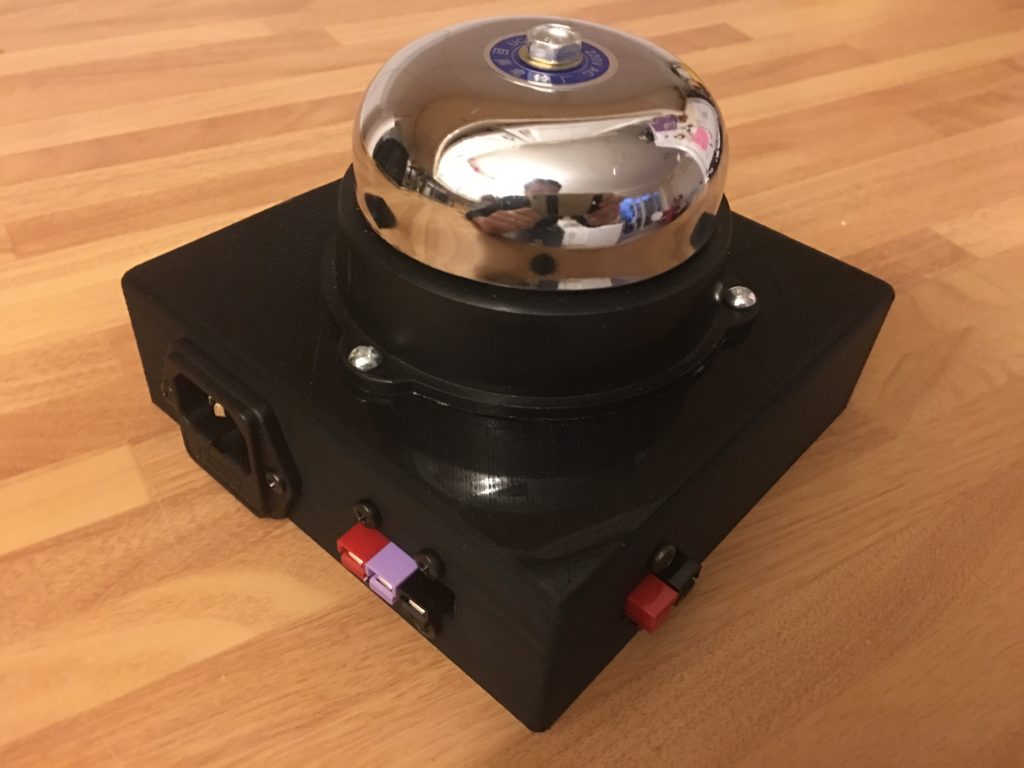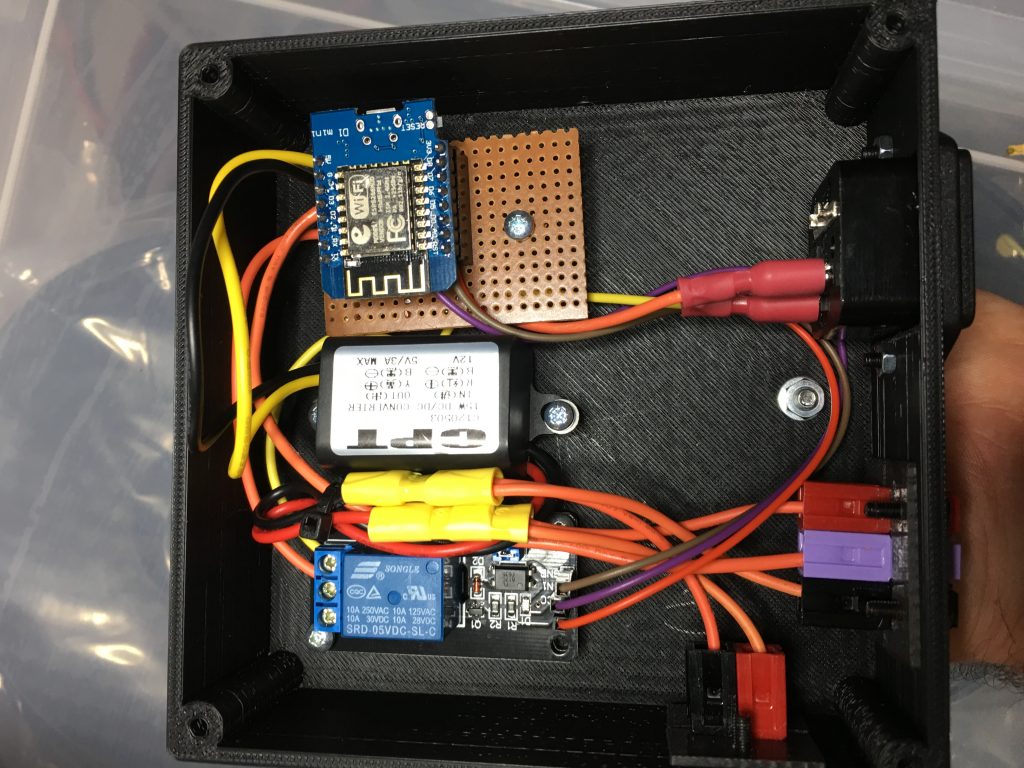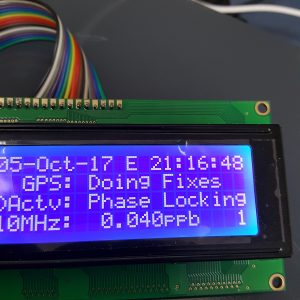ZL3GA, Geoff has put together a desktop version of Jeeves for the ZL3X contest station. He used a NeoPixel ring and a sounder instead of the traditional bell.
Archive for October, 2017
This weekend I switched on the K3S and operated in the CQWW SSB contest. It wasn’t a serious entry as family life still needs to continue. Sam managed to keep the kids safe, fed and entertained for most of the time allowing me to operate. I had a couple of technical issues at the start of the contst. My Ultrabeam was showing a high SWR which almost stopped me taking part at all. In the end, I remembered there is a calibration routine built into the controller. Once I recalibrated the antenna all was well. The other issue is RS232 stopped working around the time I was fixing the antenna. This turned out to be a hardware fault. I hadn’t screwed the DB9 into the back of the P3 and it had fallen out. Doh! Fixed and no more issues.
My target was at least 400 QSOs, 55K points, 20 Zones and 80 DXCC. I didn’t reach the zone or DXCC targets this time. I made 3 QSOs as a result of a CQ call and the rest were all S&P.
Contest : CQ World Wide DX Contest
Callsign : M1N
Mode : PHONE
Category : Single Operator - Assisted (SOA)
Overlay : ---
Band(s) : Single band (SB) 20 m
Class : Low Power (LP)
Zone/State/... : 14
Locator : IO91CN
Operating time : 12h15
BAND QSO CQ DXC DUP POINTS AVG
--------------------------------------
160 0 0 0 0 0 0.00
80 0 0 0 0 0 0.00
40 0 0 0 0 0 0.00
20 400 18 78 0 577 1.44
15 0 0 0 0 0 0.00
10 0 0 0 0 0 0.00
--------------------------------------
TOTAL 400 18 78 0 577 1.44
======================================
TOTAL SCORE : 55 392
Dupes are not included in QSO counts neither avg calculations
Operators : M1DST
Soapbox : A fun but not serious entry.
Many contest groups around the world use a hotel/butler bell to indicate a multiplier has just been worked. Jeeves is a modern, automated replacement for the bell which can be installed in or away from the working area. It also doubles up as 12v lighting for the area.
When a QSO is logged, a packet is broadcast from N1MM+ which Jeeves captures and inspects. Depending on the multiplier status of the QSO, the LED string changes colour and dances to match the 8 possible states. This is ideal for contest sites where the communal area is away from the working area and a bell may not be heard. It allows the non operators the fun of keeping track on the progress of the contest. A bell also sounds for 25ms.
My installation now requires no setup for a contest other than plugging into a 12v source (and mains if the bell is to sound).
Hardware
- ESP8266 – I used a WeMos D1 Mini ~ £3.50
- 5V Relay Module ~ £2.50
5M string of WS2812 LEDs (300) (12v) ~ £15- 5V DC/DC to power the ESP from 12V
- Small plastic enclosure – I designed and 3D printed mine including the
powerpole clamps. STL available if requested. - Smoothing Capacitor – Connect a big capacitor from power to ground (LEDs). A cap between 100µF and 1000µF should be OK.
- Mains powered bell – a 12V bell is more ideal but I couldn’t find one at a reasonable price. ~ £9.00
It might be possible to use one of the ESP8266 boards available with a built in relay if you can ensure that you can access spare IO pins to run the LEDs.
It is important to use 12v LEDs and power them directly. You will not be able to power these from the ESP device. Also, consider that you can use even longer runs of LEDs by purchasing another string and plugging it into the end of the original. The only thing to consider is the volt drop so be prepared to feed 12v directly into each string. If you don’t then you will find the LEDs may sparkle or not show the colour you are expecting.
Setup
- Download the code from https://github.com/m1dst/Jeeves
- Set your SSID and password by changing the const values.
- Change LED_COUNT to match the number LEDs in your string.
- Validate that the data pins in the config represent the pins you are connecting to.
- If you DO NOT want the lights to indicate a
non mult
Video
Future Expansion Ideas
- Sniff the current score broadcasts and perhaps expose to a responsive web interface.
- Perhaps post a message to an MQTT queue for further processing.
- The default state of the LED string is white which is perfect for lighting in a tent. Lighting may not be required during the day. Perhaps use NTP to work out the time of the day and hardcoded/GeoIP to determine the rough location or country.
With this information, it would be possible to calculate sunrise/sunset and set the brightness accordingly.
There is no point in white lights showing during a bright sunny day consuming energy. - Win-Test – Not currently possible to check multiplier status due to the limited information Win-Test broadcasts via UDP. QSO logged and status should be possible though.
I received an email from someone in the US who had just built one of my Thunderbolt Monitors. He casually asked if there was a way of showing EST rather than UTC on the display. Whilst on a computer this would be easy, it is a little harder on NETMF due to the fact it doesn’t understand timezones. It isn’t just a case of subtracting 5 hours from the UTC time as we also need to consider daylight savings time.
After some research, I put together a code change which appears to work for him and should handle the daylight savings rules too. Before I share the code I must warn you that this is a little rough but solves the problem. I will not be releasing this in the main branch but you should be able to hack it in if you really want it.
Add the following to the end of the class of program.cs.
{
var dow = (int)(dt.DayOfWeek);
// January, February, and December are out.
if (dt.Month < 3 || dt.Month > 11) { return false; }
// April to October are in
if (dt.Month > 3 && dt.Month < 11) { return true; }
var previousSunday = dt.Day - dow;
if (dt.Month == 3 && dt.Day >= 8 && dt.Day <= 14 && dow == 0)
{
return dt.Hour >= 2;
}
// In March, we are DST if our previous sunday was on or after the 8th.
if (dt.Month == 3) { return previousSunday >= 8; }
if (dt.Month == 11 && dt.Day >= 1 && dt.Day <= 7 && dow == 0)
{
return dt.Hour >= 2;
}
// In November we must be before the first Sunday to be DST.
// That means the previous Sunday must be before the 1st.
return previousSunday <= 0;
}
public static DateTime ConvertToEasternTime(DateTime dt)
{
var utcOffsetHours = -5;
if (IsDaylightSaving(dt))
{
utcOffsetHours += 1;
}
return dt.AddHours(utcOffsetHours);
}
Change references of :
_lcdshield.WriteLine(0, DateTime.UtcNow.ToString(@"dd-MMM-yy " + mode + " HH:mm:ss"));
to
_lcdshield.WriteLine(0, ConvertToEasternTime(DateTime.UtcNow).ToString(@"dd-MMM-yy " + mode + " HH:mm:ss"));
I changed the U/G to an E to signify Eastern time but feel free to ignore that or even replace it with just a space instead.
An error has occured.


